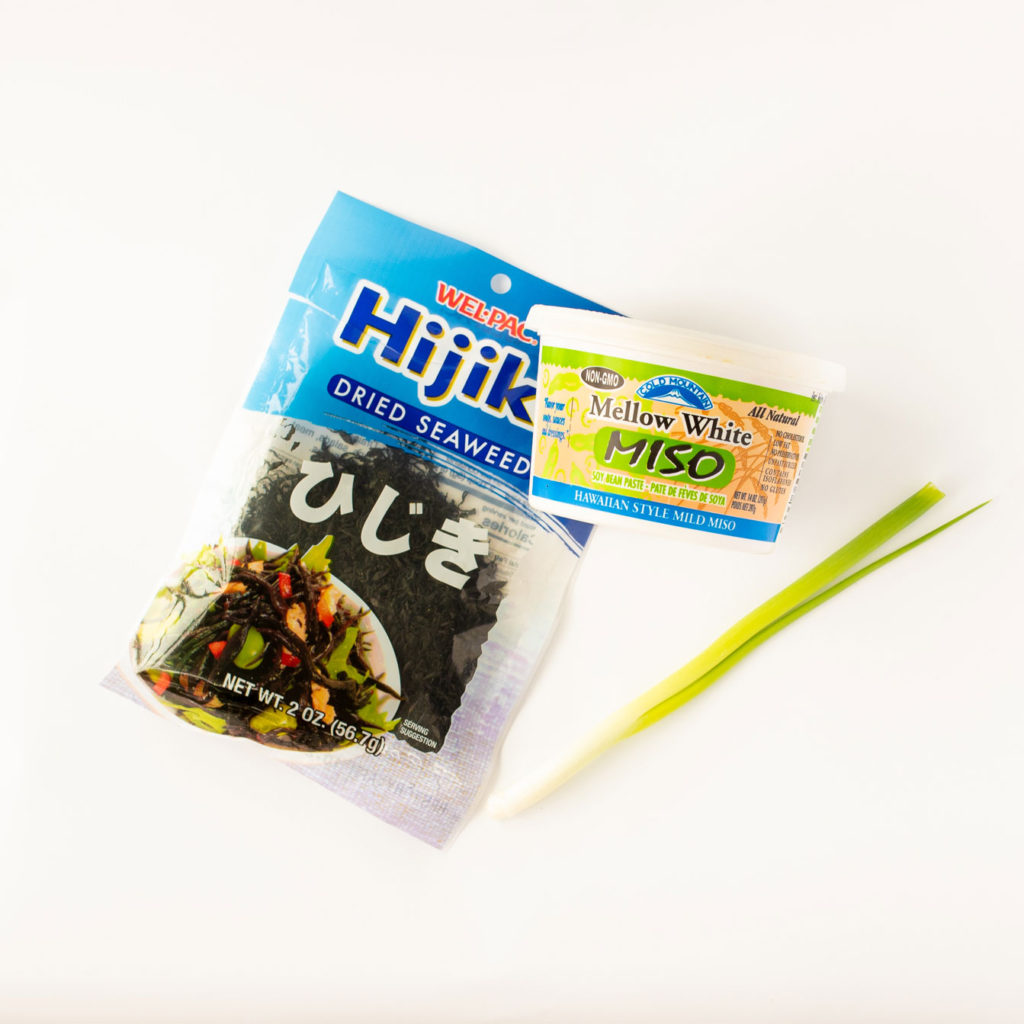3 Ingredient Miso Soup
**This post contains affiliate links and a wellness space may be compensated if you make a purchase after clicking on an affiliate link. These purchases help to keep this little space on the internet up and running. Thank you!**
Why I Drink Miso Soup in the Morning
Adding a warm cup of miso soup to your morning routine and you may just break up with your coffee. There are so many health benefits to drinking miso in the morning, and once you start you’ll wonder why you hadn’t started drinking it sooner. All of the natural minerals inside a cup of miso is like starting your day with electrolytes. Plus it’s packed with vitamins too!
Coffee vs Miso
No Caffeine: Miso soup doesn’t contain caffeine, so replacing your coffee with miso can help avoid the jitteriness that can come with your morning cup of joe.
Lower Acidity: Miso soup is much less acidic than coffee. So if you suffer from acid reflux or other gastrointestinal issues, miso is a nice substitute.
Easier on the Belly: Coffee can often irritate the stomach, especially if consumed on an empty stomach, potentially leading to discomfort and digestive issues. However, miso is gentle on the stomach and can have an nice soothing effect.
Benefits of Morning Miso Soup
While I’m not Japanese, I am inspired by their overall health and daily consumption of miso soup. They’re really onto something because miso soup is beaming with health benefits that can really kick-start your day. Every morning, I warm myself up with a steamy cup of miso soup, it’s become a ritual I can’t do without, especially in the cooler months.
What Makes Miso Soup Healthy
You can think of miso soup as a natural health supplement. It’s full of essential minerals like copper, manganese, protein, Vitamin K, zinc, and more. These vitamins, minerals, and amino acids can support overall digestive health. Plus because miso is a fermented food, the probiotics created through the fermentation process can help to keep a balanced gut flora and may help improve digestion and immune function.

Easy Miso with just 3 Healthy Ingredients
Miso Paste – The Heart of the Soup
Miso paste is indeed the soul of miso soup, bringing that distinctive umami flavor we all love. It’s made from fermented soybeans and often a grain like rice or barley. Yes, that means some miso, is not gluten-free, so if you’re celiac like me, double-check packaged ingredients.
What kind of miso is best?
There are so many varieties when it comes to miso, truly a rainbow of options ranging from white to red to darker versions, each offering a different intensity to your broth.
For this recipe, you can use any miso that you enjoy the flavor of. However, I will note that the lighter, white miso variety, is usually available in most grocery stores and delivers a subtle, sweet flavor perfect for an easy vegan morning miso soup.
Miso Paste Brands I Recommend:
- Hikari Organic White Miso Paste
- Hikari Organic Red Miso Paste
- Marukome Organic Miso Broth (they also have low sodium versions)
- Mellow White Miso (tested here) can be found in most stores, but isn’t as flavorful as the above brands.
No matter which brand you select, it will be rich in antioxidants and full of gut-friendly bacteria. It’s so versatile, so next time you spot it at the store, don’t hesitate to add it to your pantry. Plus, it makes a great base for so many dressings too!
Seaweed – The Secret to Umami Depth
Now let’s talk about seaweed – the must-have ingredient that adds a layer of complexity to our miso soup. Seaweed is a powerhouse of nutrition and flavor. There are so many types of seaweed to add to miso but please don’t cut up nori sheets and toss them into your miso broth. That’s not going to turn out well.
Instead, try wakame, the type of seaweed I typically use. This type turns into a beautiful silky texture and infuses the broth with its deep, sea-inspired flavor that defines umami.
Seaweed brings loads of calcium and iron to the table, that can help maintain healthy bones and blood. It’s also packed with iodine. Did you know that iodine is vital for a well-functioning thyroid? And the best part? Seaweed is incredibly low in calories but high in fiber. I love sneaking in fiber everywhere I can.
Green Onions – For a Cooling Aromatic Addition
Green onions are a traditional ingredient in many Japanese soups, including miso soup, and topping your miso with scallions can really add authenticity to the dish.
An Ayurvedic Touch
In Ayurvedic cooking, balancing the body’s internal energies (or doshas) is a fundamental principle. Adding cooling vegetables like green onions (scallions) serves multiple purposes, especially in providing a gentle cooling effect that helps counteract miso soup’s heat.
Don’t have green onions? Try these instead:
- Cilantro
- Daikon Radish
- Celery
- Bok Choy
Perfect 3 Ingredient Miso Soup Recipe
Ingredients
-
- 1 Green Onion
- 1 tsp Wakame Seaweed
- 1 tbsp (heaping) Miso Paste
- 4 cups Boiling Water
Instructions
-
- Bring water to a boil
- While water is boiling soak seaweed in a small container of room temp water
- Once water has come to a rolling boil, remove from heat
- Pour 2 laddles of the hot water into a small bowl
- Stir 1 heaping tablespoon of miso paste into the small bowl
- Stir until it is dissolved
- Once dissolved, pour small bowl of miso into the rest of the hot water
- Stir to combine
- Remove seaweed from water, rinse, and then add it to the pan
- Chop green onion and add to the pan
- Enjoy in a large mug or miso bowl

